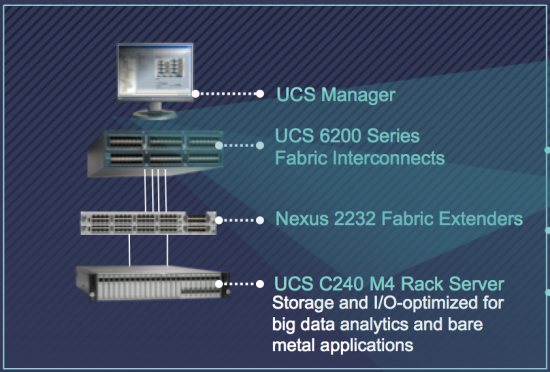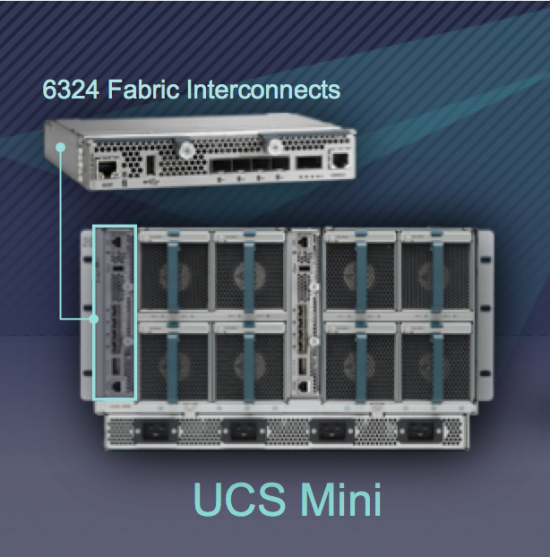Big Data is not just about gathering tons of data, the digital exhaust from the internet, social media, and customer records. The real value is in being able to analyze the data to gain a desired business outcome.
 Those of us who follow the Big Data market closely never lack for something new to talk about. There is always a story about how a business is using Big Data in a different way or about some new breakthrough that has been achieved in the expansive big data ecosystem. The good news for all of us is, we have clearly only scratched the surface of the Big Data opportunity!
Those of us who follow the Big Data market closely never lack for something new to talk about. There is always a story about how a business is using Big Data in a different way or about some new breakthrough that has been achieved in the expansive big data ecosystem. The good news for all of us is, we have clearly only scratched the surface of the Big Data opportunity!
With the increasing momentum of the Internet of Everything (IoE) market transition, there will be 50 billion devices connected to the Internet by 2020—just five years from now. As billions of new people, processes, and things become connected, each connection will become a source of potentially powerful data to businesses and the public sector. Organizations who can unlock the intelligence in this data can create new sources of competitive advantage, not just from more data but from better access to better data.
What we haven’t heard about – yet—are examples of enterprises that are applying the power of this data pervasively in their organizations: giving them a competitive edge in marketing, supply chain, manufacturing, human resources, customer support, and many more departments. The enterprise that can apply the power of Big Data throughout their organization can create multiple and simultaneous sources of ongoing innovation—each one a constantly renewable or perpetual competitive edge. Looking forward, the companies that can accomplish this will be the ones setting the pace for the competition to follow.
Cisco has been working on making this vision of pervasive use of Big Data within enterprises a reality. We’d like to share this vision with you in an upcoming blog series and executive Webcast entitled, ‘Unlock Your Competitive Edge with Cisco Big Data Solutions’, that will air on October 21st at 9:00 AM PT.
I have the honor of kicking off the multi-part blog series today. Each blog will focus on a specific Cisco solution our customers can utilize to unlock the power of their big data – enterprise-wide– to deliver a competitive edge to our customers. I’m going to start the discussion by highlighting the infrastructure implications for Big Data in the internet of Everything (IoE) era and focus on Cisco Unified Computing System initially.
Enterprises who want to make strategic use of data throughout their organizations will need to take advantage of the power of all types of data. As IoE increasingly takes root, organizations will be able to access data from virtually anywhere in their value chain. No longer restricted to small sets of structured, historical data, they’ll have more comprehensive and even real-time data including video surveillance information, social media output, and sensor data that allow them to monitor behavior, performance, and preferences. These are just a few examples, but they underscore the fact that not all data is created equally. Real-time data coming in from a sensor may only be valuable for minutes, or even seconds – so it is critical to be able to act on that intelligence as quickly as possible. From an infrastructure standpoint, that means enterprises must be able to connect the computing resource as closely as possible to the many sources and users of data. At the same time, historical data will also continue to be critical to Big Data analytics.
Cisco encourages our customers to take a long-term view—and select a Big Data infrastructure that is distributed, and designed for high scalability, management automation, outstanding performance, low TCO, and the comprehensive, security approach needed for the IoE era. And that infrastructure must be open—because there is tremendous innovation going on in this industry, and enterprises will want to be able to take full advantage of it.
 One of the foundational elements of our Big Data infrastructure is the Cisco Unified Computing System (UCS). UCS integrated infrastructure uniquely combines server, network and storage access and has recently claimed the #1, x86 blade server market share position in the Americas. It’s this same innovation that propelled us to the leading blade market share position that we are directly applying to Big Data workloads. With its highly efficient infrastructure, UCS lets enterprises manage up to 10,000 UCS servers as if they were a single pool of resources, so they can support the largest data clusters.
One of the foundational elements of our Big Data infrastructure is the Cisco Unified Computing System (UCS). UCS integrated infrastructure uniquely combines server, network and storage access and has recently claimed the #1, x86 blade server market share position in the Americas. It’s this same innovation that propelled us to the leading blade market share position that we are directly applying to Big Data workloads. With its highly efficient infrastructure, UCS lets enterprises manage up to 10,000 UCS servers as if they were a single pool of resources, so they can support the largest data clusters.

Because enterprises will ultimately need to be able to capture intelligence from both data at rest in the data center and data at the edge of the network, Cisco’s broad portfolio of UCS systems gives our customers the flexibility to process data where it makes the most sense. For instance, our UCS 240 rack system has been extremely popular for Hadoop-based Big Data deployments at the data center core. And Cisco’s recently introduced UCS Mini is designed to process data at the edge of the network.
Because the entire UCS portfolio utilizes the same unified architecture, enterprises can choose the right compute configuration for the workload, with the advantage of being able to use the same powerful management and orchestration tools to speed deployment, maximize availability, and significantly lower your operating expenses. Being able to leverage UCS Manager and Service Profiles, Unified Fabric and SingleConnect Technology, our Virtual interface card technology, and industry leading performance really set Cisco apart from our competition.
So, please consider this just an introduction to the first component of Cisco’s “bigger”, big data story. To hear more, please make plans to attend our upcoming webcast entitled, ‘Unlock Your Competitive Edge With Cisco Big Data Solutions’ on October 21st.
Every Tuesday and Thursday from now until October 21st, we’ll post another blog in the series to provide you with additional details of Cisco’s full line of products, solutions and services.
View additional blogs in the series:
9/25: Unlock Big Data with Breakthroughs in Management Automation
9/30: Turbocharging New Hadoop Workloads with Application Centric Infrastructure
10/2: Enable Automated Big Data Workloads with Cisco Tidal Enterprise Scheduler
10/9: Aligning Solutions to meet our Customers’ Data Challenges
10/14: Analytics for an IoE World
Please let me know if you have any comments or questions, or via Twitter at @CicconeScott.

CONNECT WITH US